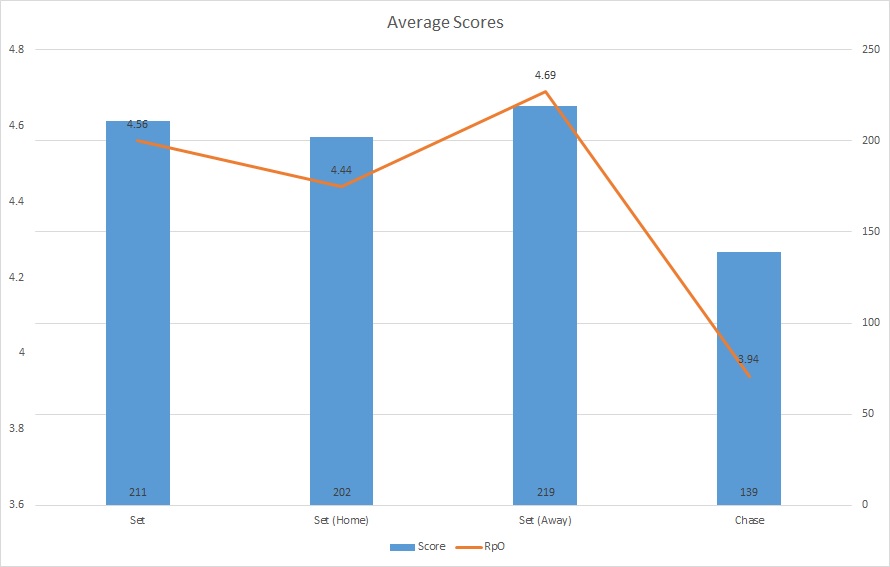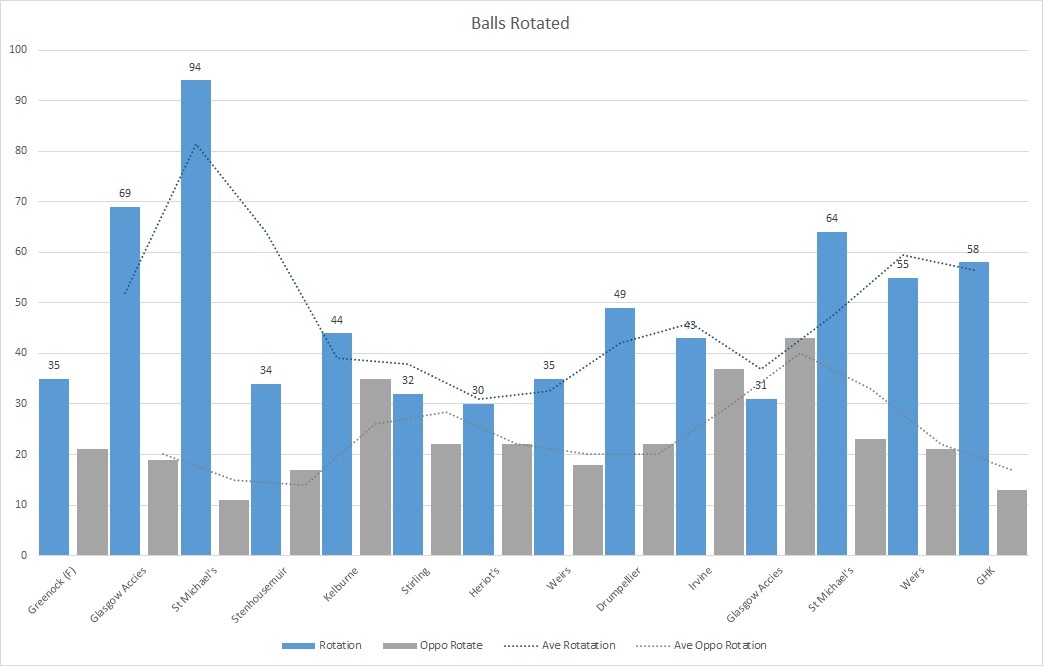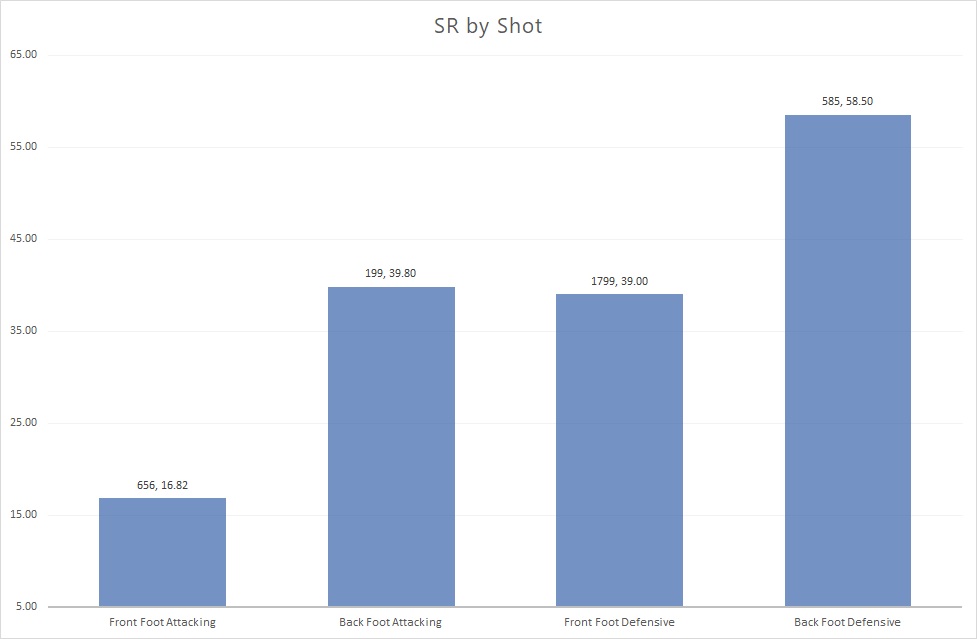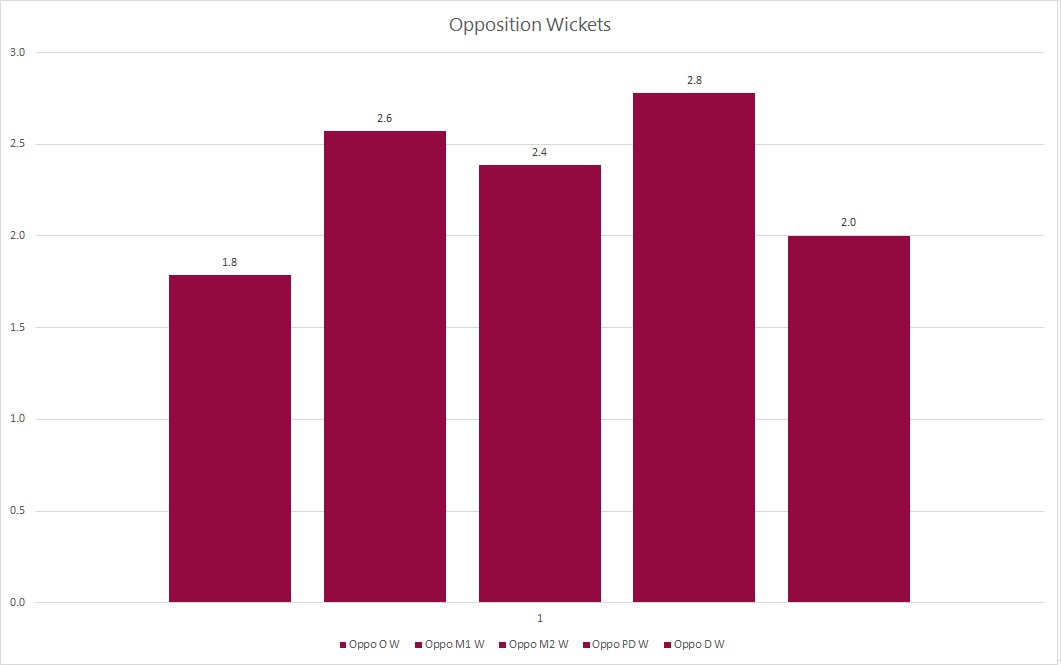Fielding was improved for West in 2017 mainly with the introduction of three very good out fielders and a full time wicketkeeper into the side. This was as targeted, but we did make some chances to fielding measurement and preparation that are worth discussing in detail.
Here's what we found.
Fielding Targets
The targets for 2017 were:
- Improve percentage of catches taken from 57%.
- Hit the stumps more than 25% of attempts.
- Make fewer than five ground fielding mistakes.
These are based on last year's performance. And tracked every game, as per last year.
We also introduced a new standard called "Fielding Impact" (FI). This is a way of working out roughly how many runs the team lost and saved through fielding. We had no metrics for this, so it was a season of working out what was acceptable. More on that later.
Catches and chances
Catching was improved vastly on last season with 70% of chances held: 74 balls went to hand and West clung on to 52 of them.
This broke down into 31 chances in close (slips, close catchers, wicketkeeper, and caught and bowled), 35 chances in the ring and 8 chances on the boundary:
It was pleasing to see that close and inner ring catching had a high catch percentage as we have never tracked these stats before. Infield catching was especially good with 74% held.
Boundary catches were more rare and more likely to be dropped. It's hard to know how much this is an issue because of the small number of chances on the rope. That said, it's worth looking at how we practice based on the information we see.
For the first time we were also able to breakdown catches by player.
15 players had at least one chance. the average chances per season for outfielders (excluding wicketkeepers) was 3.9 (for the two keepers used it was 11.5). The low number of chances, even for regulars shows how important it is to be able to take those chances when they come under pressure!
Individual success varied. Five players held every chance. Another two were above the 70% mark. Four more were above 60%. That's 11 of 15 who met the target for the season. Of course, these percentages are from low numbers, but you work with what you have.
Next year the target will be higher. Nevertheless, these are good signs of improvement. With this information we can tailor training to make sure players get better at holding chances in the right areas and get more over 70%. We can also target the guys who catch less than 60% at the moment and work on improving the numbers of the less effective guys this season.
For example, one player - a good fielder - dropped four from eight chances. Looking at his stats we can see he dropped two caught and bowled while his outfield catching was four from six (67%). We can see he needs more work on catching from his own bowling than catching in his favoured position at point.
One small thing to note here is we changed the way we measured a chance this year, grading them as either standard (G1) or world-class (G2). World-class drops were not counted to encourage players to go for them (and West got 4 absolute worldies this season as a result).
This was slightly different to last year where all drops were counted the same. However, we think this grading system is both fairer and more motivating for players. Even adjusting for last year's method, catches exceeded 60% and so there was improvement.
How did performance change over the season?
Catches and drops: dotted lines are the rolling average.
As you can see, catching was a little wobbly at the start, but settled into a much better ratio by the end of the year. We are constantly searching for consistency, but it does stand to reason that catch percentages will improve as volume of practice goes up.
Ground fielding and run outs
The other key indicator of good fielding is ground work: stopping and throwing.
We wanted to measure this to give a benchmark. We had a broad idea from last year (less than five misfields). In 2017 we tracked it in more detail and by fielder as well as by team:
- Good stops that likely saved runs.
- Misfields that cost runs.
- Good throws that lead to a run out or run out appeal (direct hit or assist).
- Poor throws that we likely to have cost a run out (missing a direct hit or out of reach for an assist).
While there is a lot of interpretation about this, there are also clear moments that can be recorded. So we did.
In terms of raw performance, ground fielding looked like this as a team:
Number of ground fielding chances, split by stops and misfields
This chart is totals for the season across all fielding positions. It works out as 3 misfields per match, well below target.
Per player it looked like this:
Percentage of stops to misfields for the 9 fielders with several chances
We can see a sharp variation in the standards by fielders. The best fielder did not make a mistake in five chances, the worst had four misfields in six chances. A tiny dataset, but clearer that the feeling someone is "good" or not.
This allows us to see exactly who is fielding well and give far more specific coaching. So, the player who made three world-class stops but also had four misfields (in 14 chances) would have a different training plan to one who made eight good stops (but no world-class ones) in 10 chances.
We are also able to sift this by position (close, ring, boundary) to see even more granular ground fielding skills on show and further personalise training.
When it comes to run outs, there were very few chances across the season. There were 21 run out chances, nine resulted in either a run out or a close appeal for a run out: A 42% success rate. That is well above the 25% target so very pleasing.
Of course that number can be improved further with practice, but it is well on target and enough to put doubt in the mind of any opposition batsman trying a sharp single: His chances are close to fifty-fifty!
Also, a side point here here is how important focus is on fielding.
The average outfielder averages less than one fielding effort a match (keepers had 1.2). Even the out fielder with the most chances had 1.5 per match.
The opportunity to save runs is small individually but can make a huge difference on a team level (8.6 opportunities to save runs per game, leading to an average runs saved of around 17, enough to win most games.
Which brings us onto our grand fielding unification theory: Fielding Impact.
Fielding Impact
We brought these stats together into one number called Fielding Impact (FI). At a glance, it allows us to see how the team is doing and how individuals compare.
The idea of FI is to put a runs number on fielding.
Every fielding act had an impact on the score: Run out a batsman and you save runs he was likely to get. Drop him and you cost runs. This all feeds into one number.
We had no expectations on what was a good performance in FI, other than it is ideal to be in the positive (saved runs overall rather than cost runs).
On average, West's FI was 5.1 (runs saved per match)
On average opposition teams FI was -2.1 (runs cost per match).
However, the variation was great. West's best FI was 32 and the worst was -32. Opposition scores had simlair wide variance (24 to -28). Off the back of this, one aim may be to work on consistency of fielding. It should really gradually improve through the season as player's practice more. Here is the detailed breakdown by match:
Fielding Impact per match, rolling average is the dotted line.
Now we have a broad number, it opens up other such as what effect FI has on overall scores. This is hard to measure as fielding is only one part of a bowling performance, but we can look at some raw numbers.
There was no correlation between a better FI and a lower opposition score. Also, if you adjust each game to include the FI in the final scores, no games would have had a reversal in outcome. However, the margin of victory was larger in every case.
Catches may not have won West matches this year, but in closer run games, I can see how a game where 20 or 30 runs are saved will make the difference in 2018. We will see.
We also now know what standard we are at and work on improving team performances by tracking results next year. We can increase the team average FI target and get to work improving it.
The other benefit of FI is to inspire some competion between players. Here is the FI list for the main fielders:
You can see a huge difference in FI between fielders. It seems saving more than 50 runs is a good target, and keeping the number of errors to a minimum is also useful.
The overall FI of a good fielder seems to be more than 10, and this correlates to the guys who are considered the best fielders in the side just by general opinion.
It also seems that the less skilled fielders can probably still shoot for a positive FI, as only four fielders were in the negative.
Speaking of which, two of the fielders at the bottom of the table are generally considered excellent in the field. So, why are they low down and does this show FI up?
I think the system still works because it removes the emotions from fielding. Both numbers 8 and 11 in the list are brilliant; fast, athletic, good hands and strong arms. However, 8 missed two simple run outs and dropped two simple catches. 11 dropped four straight-forward catches so while he barelay made a mistake all year, those catches killed his score. Neither did anything world-class like a diving catch or direct hit run out with one stump to aim at.
Those simple outcomes (what happened, not what looks good) proved that looking good and doing it when it counts are different things.
To prove the point, two fielders who are not considered as good as 8 and 11 finished in the positive. One did not make an error all season.
This lead to the challenge this year of "proving" that FI is a good thing to track for the players. Most like the competition, but some found it easy to say "well, 11 is at the bottom and we all know he is a gun fielder, so that average must be flawed".
In fact, it's important we press home the stat merely reports outcomes in an easy to digest way. So if you see yourself at the bottom of the table, it's not the table at fault, you need to hold more catches and hit the stumps more often!
Like all stats, FI is just a tool by which you can plan tactics and practice, and for that we are very pleased to have it. It will continue in 2018.
Areas of improvement
There is no doubt West improved their fielding in 2017. Even by the simple stat of fewer drops and misfields the difference is clear.
This year we have had much more information to work with to poinpoint how to improve further. It seems we are on the right track, but will look at further improvements:
- Balancing catching volume to reflect chances that come. More close catching, less (but more intense) boundary catching.
- Improving concentration and focus skills by training basic skills under fatigue and pressure. Fielders have precious few chances and each error is costly.
- Giving individual players ways they can improve FI by pinpointing weaker areas to improve and strengths to focus on (for example, a good ground fielder in the ring but poor catching on the rope should spend as much time as possible in their strongest position while also spending some practice time taking high catches under pressure)
- Working on "worldie" skills that may lead to just one extra chance taken per year. For example, weak side pickup and throwing at one stump.
As always, the focus at West is never on using information to prove someone worthy or unworthy, but as grist for the mill to further development. In the Premier League we will need to make as few errors as possible, so now is the time to start tweaking skills upwards further and make FI even better in 2018.










































